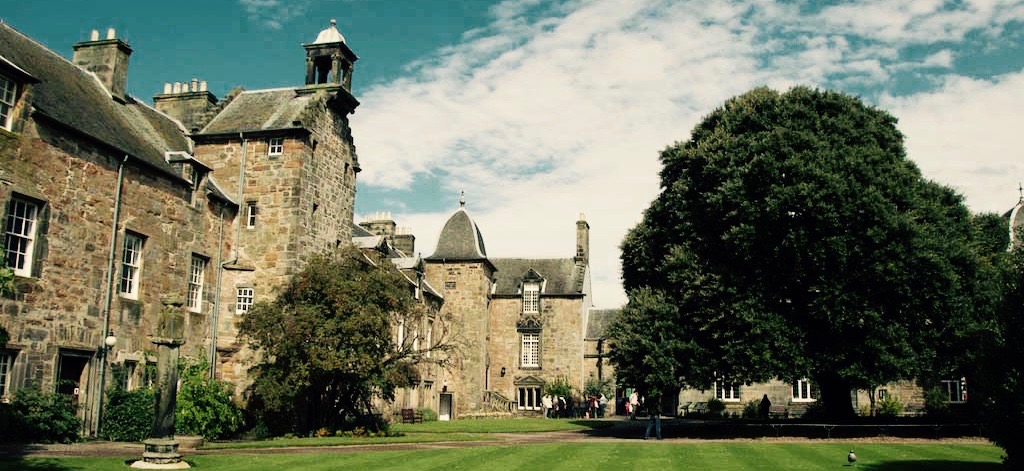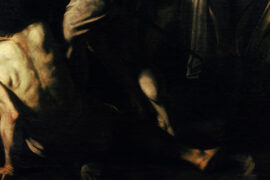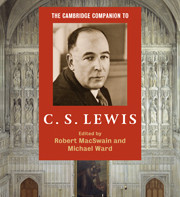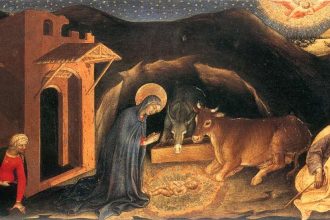Editor’s Note: We are pleased to present a Q&A with ITIA Co-Founder Prof. Trevor Hart. In this interview, Hart discusses the beginnings of ITIA and its subsequent contributions, the importance of imagination for theology, as well as his own future projects.
What was your inspiration for beginning the Institute for Theology, Imagination and the Arts (ITIA) with Jeremy Begbie?
It goes all the way back to my undergraduate study at the University of Durham when two modules on ‘Theology and Literature’ were available. I took those, and found them very rewarding as a way of engaging theological questions. When I moved to St Andrews from Aberdeen in 1995 I had freedom to decide what was taught in the field of Christian theology, so immediately began teaching a module of that sort. It was very popular. We read all sorts of things from Shakespeare and Milton to Saul Bellow and the poetry of R. S. Thomas. And I could see students realizing for the first time that theology and literature are both concerned in their distinct own ways with the same territories of human experience, and that a serious conversation between them was worthwhile for both. That module ran successfully for a couple of years.
In 1997 I was asked to give the Drew Lecture at Spurgeon’s College in London, and I chose as my topic the relationship between eschatology and imagination. Preparing that lecture opened up all sorts of questions for me about the nature of human imagining, its fundamental roles in structuring human life, and its particular manifestations in the arts. So, I quickly broadened out the module I had been teaching and turned it into an offering on ‘Theology and Imagination’. Again it proved to be very popular, and drew within its scope various other arts besides literature, as well as a considerable amount of theorizing about imagination from philosophical, psychological and various other sources.
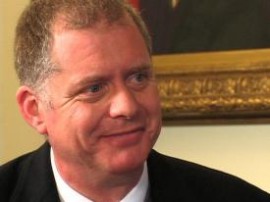 As that module developed, I saw more and more just how thoroughly our capacity for acts of imagination was shot through our distinctly human engagements with the world and with God. In fact, fairly early on I formulated a hypothesis which, 20 years or so later, I still have to work out and ‘test’ in a developed way—i.e., that it is above all by laying hold of our imaginative life (which includes, among other things, our capacity for hope, memory, desire, acts of interpretation and ratiocination, as well as more ‘artsy’ and creative things) that God’s Spirit regenerates our humanity from the inside out. I really do become more convinced the more time I spend studying it that imagination lies at the heart of our humanity, and in many ways drives and directs who and what we are and are becoming. It’s what makes us capable of the very best and the very worst of human behaviours. There’s nothing more imaginative than a torture chamber. But at the same time, there’s nothing more imaginative than the sort of self-giving love that actively seeks the best for others, even at its own expense.
As that module developed, I saw more and more just how thoroughly our capacity for acts of imagination was shot through our distinctly human engagements with the world and with God. In fact, fairly early on I formulated a hypothesis which, 20 years or so later, I still have to work out and ‘test’ in a developed way—i.e., that it is above all by laying hold of our imaginative life (which includes, among other things, our capacity for hope, memory, desire, acts of interpretation and ratiocination, as well as more ‘artsy’ and creative things) that God’s Spirit regenerates our humanity from the inside out. I really do become more convinced the more time I spend studying it that imagination lies at the heart of our humanity, and in many ways drives and directs who and what we are and are becoming. It’s what makes us capable of the very best and the very worst of human behaviours. There’s nothing more imaginative than a torture chamber. But at the same time, there’s nothing more imaginative than the sort of self-giving love that actively seeks the best for others, even at its own expense.
By the late 1990s I had attracted a couple of PhD students to work with me on topics related to all this, and had secured a small grant from the British Academy to run a research project on ‘Theology and Imagination’. It was around that time that Jeremy Begbie, whose Theology Through the Arts project in Cambridge I had been aware of and involved in, came to St Andrews, and it seemed to make sense to bring the two things together under a common profile. So, after a bit of scribbling on the backs of envelopes, that’s how we came up with ‘Theology, Imagination, and the Arts’.
Was it difficult to justify the formation of ITIA and its relevance to theological study?
Not really. By 2000 when the Institute was licensed the journal Literature and Theology had already been established, and Jeremy’s project in Cambridge had been running successfully for several years. It was a new idea to some colleagues here in the School of Divinity, but the success of the undergraduate modules, then a postgraduate Masters programme, and then some doctoral students working in the area made it easy to persuade the University both that there was a wider conversation going on in the discipline and (possibly more importantly!) that there was a market and we might well be able to attract a good number of students via a research institute in the field. I don’t think at that stage we anticipated just how successful that would prove to be, but it was a good intuition.
Do you feel ITIA has contributed to any growth within this area of study?
Yes, of course. It would be odd if, after 17 years, it hadn’t! I suppose that’s reflected in several ways. First, I think ITIA still has a relatively distinctive profile. I have always been struck by the number of applicants for our programmes from all over the world who say that they want to come to ITIA because there’s nowhere else doing ‘this sort of thing’. What I think they mostly mean is the ‘sort of thing’ that has been ITIA’s concern from the outset and remains its concern—namely, to engage theologically with imagination and the arts, with a view to ascertaining what each might contribute constructively to the other. There are now some other places doing this of course, but still relatively few, and ITIA is certainly at both the heart and the cutting edge (apologies for the horrible mixing of metaphors!) of the field. Over the years it has trained a score of young scholars many of whom are now in academic posts across the world, and some of whom are already beginning to introduce their own students to ITIA’s ways of thinking and engaging theologically. Additionally, the conferences we have hosted in the past have been very fruitful networking opportunities for folk working in the field, and publications arising from some of those conferences were an important factor in launching the Ashgate monograph series which has itself made a major contribution to scholarship in the field. [1]
How has your view of theology and the arts evolved over the years since its inception?
I think my view of the field has actually remained pretty constant, though I’ve obviously learned a huge amount over the years, so I’m probably more aware of certain things. One thing I’m very aware of is that loose talk about ‘theology and the arts’ or ‘theology and imagination’ can be unhelpfully misleading, because they may well be taken to refer to agreed ways of working when in reality they mask quite divergent sorts of projects. I have been reading a book recently on theology and literature where the terms ‘theology’ and ‘theological’ are widely used to flag a field of concern, but where they are equally clearly being understood by different authors in quite radically different senses, and I find that unhelpful and unlikely to result in advancing intellectual conversation unless the ambiguities are flushed out and addressed. Sometimes ‘theology’ seems to connote little more than some involvement of some sort with some religious tradition. I’m not suggesting that there aren’t various legitimate and worthwhile ways of engaging theologically with the arts. (For me that is always going to involve doing so from a standpoint identifiably within Christian theology and its concerns—though of course there are numerous ways of doing even that). But I do think it’s important to be clear about differences of approach and assumption, rather than these being occluded by a loose use of terms. It makes all the difference in the world what is meant by ‘theological’, and that seems to me often to be more prone to ambiguity (whether deliberate or accidental) in conversations about theology and the arts than in some other theological territories.
Why do you feel the arts and imagination are often neglected within many areas of theological study?
That’s an interesting question. At one level it’s surprising. After all, Christian theology should be concerned to engage critically and constructively with the whole range of human understanding and practice. A robust doctrine of creation, which sees God as involved with and concerned for every sphere of the world’s reality, gives us not just a mandate but an obligation to do that. To be sure, classical models of theological education (still reflected to a large extent in the core curriculum of many theology programmes) concentrated on grounding students in biblical, historical and doctrinal disciplines. And that’s vitally important. There’s no point in trying to engage in constructive theological conversation with the arts or anything else if you don’t know enough theology, and aren’t properly earthed in knowledge of scripture and tradition. But it can’t stop there, otherwise theology ends up being an exercise in Christian navel-gazing which has nothing to say to the world beyond the boundaries of the church. In any case, any course which seeks to teach the history of the church without including some element of study of its music, poetry, visual art, theatre and architecture is actually failing to get to grips with a huge part of the way in which Christians over the centuries have interpreted, made sense of and handed on their faith.
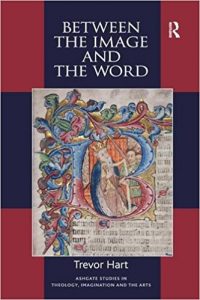 In the last fifty years or so theology has begun deliberately to widen its intellectual gaze and field of engagement. So in addition to the usual suspects (history and philosophy) theologians have begun to engage in conversation with the natural sciences, the social sciences and others. But still it is relatively rare for the arts (theory and practice) to get a serious look in, which is odd, given how important the arts in their various guises are to us in one way or another. I think in parts of the world where the theological heritage is mostly Protestant, the problem lies in a longstanding, deep-rooted (though generally remarkably unthinking) suspicion of the arts and imagination going all the way back to the iconoclasm of some of the radical Reformers. And, of course, there are some very unhelpful examples of the use of imagination in theology, encouraging people to suppose, for instance, that theology is grounded either in divine acts of revelation or acts of human imagining (here meaning ‘stuff that we “make up” as we go along, with no objective basis in reality). That’s a crass and I think foolish polarization, but it seems to me to be one that many very well trained theologians fall foul of. What’s needed, I suppose, is some good examples of theological engagement in this territory, to demonstrate the positive contributions that imagination and the arts have made in the past and still have to make in theology, and vice-versa.
In the last fifty years or so theology has begun deliberately to widen its intellectual gaze and field of engagement. So in addition to the usual suspects (history and philosophy) theologians have begun to engage in conversation with the natural sciences, the social sciences and others. But still it is relatively rare for the arts (theory and practice) to get a serious look in, which is odd, given how important the arts in their various guises are to us in one way or another. I think in parts of the world where the theological heritage is mostly Protestant, the problem lies in a longstanding, deep-rooted (though generally remarkably unthinking) suspicion of the arts and imagination going all the way back to the iconoclasm of some of the radical Reformers. And, of course, there are some very unhelpful examples of the use of imagination in theology, encouraging people to suppose, for instance, that theology is grounded either in divine acts of revelation or acts of human imagining (here meaning ‘stuff that we “make up” as we go along, with no objective basis in reality). That’s a crass and I think foolish polarization, but it seems to me to be one that many very well trained theologians fall foul of. What’s needed, I suppose, is some good examples of theological engagement in this territory, to demonstrate the positive contributions that imagination and the arts have made in the past and still have to make in theology, and vice-versa.
Often, people have vague ideas about the imagination and they are often surprised when it is brought into the context of theological study. How would you define the imagination and what is the importance of it in our understanding and engaging with Christian theology?
I always try and avoid hypostatizing imagination with the definite article (‘the imagination’) as though it were a particular thing with a particular job. It’s difficult, because the linguistic heritage of an older faculty psychology which divided the soul or mind up into numerous parts, each with a distinct remit (‘the reason’, ‘the emotions’, ‘the will’ etc), persists and is firmly embedded in the ways we typically think and speak. But I think it’s helpful to unpick that, and speak instead about imagination, and about imaginative (or, correspondingly, unimaginative) ways of thinking and behaving.
That being said, if one were to take an inductive approach to ‘definition’, then the list of things which wouldn’t be possible for us as human beings were we to lack imagination (the way I often get people to begin thinking about it) is huge and very revealing. There’s a great novella by Yevgeny Zamyatin called We (first published in English in 1924) which imagines (sic!) a future dystopian state in which citizens are controlled by the outlawing of imagination and its gradual removal from society through a newly developed medical procedure rolled out ‘free at the point of delivery’, in the way that some cities seek to neuter all feral cats. One result of having an imaginectomy, of course, is that one can no longer imagine alternatives to the given state of play, and so loses all semblance of freedom, and with it, more or less, one’s humanity as a whole.
Studies of imagination tend to alight early on the notion of the ability to see in one’s mind’s eye things which are not actually present, or to ‘go beyond the given’. That might mean mere daydreaming of course – drifting off gladly to some infinitely preferable place and time, while the lecturer drones on about this, that and the other thing. But it does also include the entirety of things past and future; and, given the ambiguous status of the present moment and our capacity to dwell in it (as Moltmann reminds us, we are always polluting it with things remembered and things hoped for or feared, so that it is really always the present-past or the present-future rather than unambiguous ‘presence’) that’s quite a comprehensive remit! We also need to remember that most careful accounts of the ways in which we encounter reality through sensation, intuition and other means grant acts of an imaginative sort (albeit now generally understood to be tacit and unconscious) a significant place. And that means that our experience of the ‘given’, the present moment that confronts us in conscious experience, is also in large measure attributable to imaginative ways of responding and thinking. That’s a very baseline account of the sort of thing imagination contributes to our experience of the world, and it covers everything of course from apprehending the Number 15 bus that is bearing rapidly down on us as we cross South Street to grab a coffee to the agonized efforts of poet, composer or playwright to realize a creative idea in words, tones or actions. Those and an infinite number of other human actions and reactions sit at radically different points on what is nonetheless the same continuum.
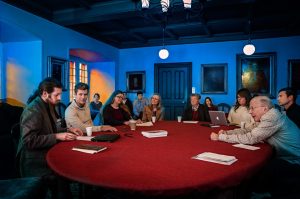
So I would begin there, because it makes it clear that there is no part of our humanity that is not mixed up with our imaginative capacity in one way or another, even though that is going to look very different in different instances. The other (more specific) thing I tend to draw attention to fairly early when I’m teaching on this subject is that patterns of one sort or another, and our ability to make and to discern them, is a function of imagination. The ability to isolate certain bits and pieces from the welter of bits and pieces confronting us (visually, aurally, or whatever), and to trace meaningful relationships between them, is a highly imaginative capacity. Again, it is an example of our ability (and our need) to go beyond what is given to us, and to do something with it in order for its meaning or value to become apparent. Very often, of course, rather than imaginatively erasing or bracketing out of consideration some things in order to attend to others (as when we’re trying to ‘overhear’ a conversation in a busy coffee-shop, or when we’re encouraged to ‘see’ the face in the tea-leaves left at the bottom of the cup) we are called upon instead to supply bits and pieces that are absent or missing, so as to situate some particular thing within a pattern, and so grasp it as meaningful. In effect, that means that any and every act of interpretation that we are called upon to perform and are capable of humanly has a high quotient of imagination (let’s call it QI instead of IQ!).
Now, if any of the above is true (which it is), why on earth would theologians NOT want to take imagination seriously as something to be reckoned with and more fully understood? To suggest that theologians ought not to bother about the nature and functions of reason, conscience, our sensory apparatus and neurological systems, will, or any of a number of other components of a human way of being in and engaging with the world would be highly unlikely to be taken seriously. Theologians have always wanted to reckon with these things, and to show that their own claims are consonant with the testimony to reality which these things afford us.
So, if imagination is indeed such a basic and far-reaching element in our knowledge and experience of the world, one might reasonably suppose (another imaginative act, by the way, ‘supposing’…) that greater understanding of its contributions and potentialities is likely to be of benefit to a theological account of the world (supposing, again, that theology is indeed concerned with the same world, and not some other).
As far as imagination’s roles vis-a vis theology and the world of faith and practice from which theology issues is concerned: Well, let’s begin with the patently obvious. God is not part of the given world, which means that any thought about God and any speech about God is bound to involve acts of imagination, no matter how carefully regulated and constrained we may wish to insist upon them being. Theological language is from first to last imaginative, even if we insist (as I think Christian theologians should) that it arises under the pressure of acts of ‘inspired’ imagining in Scripture and elsewhere. If it straddles the gap between the ‘things visible and invisible’ to which the creed refers us on the one hand, and the Creator who called them into being on the other, then simply at the level of linguistics we are compelled to admit the use of analogy and metaphor—highly imaginative linguistic forms which enable and solicit acts of imagination on our part.
Second, Jesus is not part of our ‘given’ experience in the here and now if we take that as meaning whatever confronts us objectively and materially. Claims about his risen presence to us can quickly be made, but even in entertaining those, let alone making sense of them, we are quickly into highly imaginative territory. And when we read the gospels, of course, we are similarly handling facts and interpretations which take us at once into territory very far from what we can see and touch and hear and smell and taste. But that’s okay, presumably; because (thirdly and finally, though we could go on a long time in this vein…) the forms under which God reveals himself, themselves presume our capacity to imagine, and actively solicit acts of imagination on our part in receiving and appropriating and responding to what God shows us. This is true from the particulars of Jesus’s own pedagogy (‘To what shall we liken the kingdom of God…?), to the substance and forms of Scripture as a whole. Much of it is directed towards and seeks to baptize not just our capacity for acts of imagining at the tacit, almost unconscious level (reading, thinking about, making sense of, and so on), but at the much more explicit and conscious level, recognizing it as a highly imaginative text, and responding to it precisely as such by engaging with it imaginatively. Indeed, if I were to stick my neck out here and, as agent provocateur lob a grenade into the playground of those working in biblical hermeneutics, I would want to insist that biblical texts whose form and substance call naturally for imaginative responses must be acknowledged and responded to in that way, or our responses are fundamentally disobedient to the form which the Word of God takes in coming into the world. That’s probably a good place to stop, and batten down the hatches!
What are you working on currently?
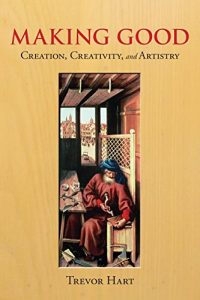 My most recent book was the first part of a projected three-volume set, A Poetics of Redemption. That title is meant to flag the fact both that the three volumes approach the story and scope of Christian theology via an inter-disciplinary engagement with imagination and artistry, and the overarching thesis I mentioned earlier (and which will be the focus of Volume 3 in the set), that it is precisely through the transformation of our imaginative capacities and practices that the work of the Holy Spirit in regenerating our humanity may be traced. The larger project follows a Trinitarian ground-plan, and Volume 1 (Making Good: Creation, Creativity and Artistry. Waco TX: Baylor University Press, 2014) argues for an understanding of human ‘creativity’ as a participation in God’s creative project, of which I take artistry at its best to be a convenient paradigm. [2] Volume 2 is what I’m currently working on. It’s provisional title is Taking Flesh: Incarnation, Embodiment and Artistry. As that title suggests, my concern in the book will be with the situation of our humanity in the world as embodied creatures who seem (to ourselves and to one another) to be more than the sum of our material existence alone, but compelled instead to hold together in our dealings with the world the distinct spheres of material existence on the one hand and whatever we take to be real (thoughts, images, values, meanings, feelings, persons, etc) that cannot be experienced, weighed and measured in purely material terms on the other, and (finding them in any case to be perichoretic rather than separable spheres of a single reality) to interpret each in terms proper to the other. I shall argue, again, that our human participation in the arts (whether as composer/artist, practitioner/performer or recipient/participant) reflects this unity-in-distinction and distinction-in-unity very well, and thus provides a convenient paradigm through which to reckon with its demands and possibilities. The theological analogue for the exploration of all this will be the central Christian claim that God’s own Word, in giving himself to humankind in such a manner as to be redemptive, ‘took flesh’ and transfigured it, thereby compelling a theological revaluation of the whole of our humanity, including the body. It’s very much still a work in gestation, but it’s coming together, and I’m hoping that Baylor University Press will publish it in about two years’ time.
My most recent book was the first part of a projected three-volume set, A Poetics of Redemption. That title is meant to flag the fact both that the three volumes approach the story and scope of Christian theology via an inter-disciplinary engagement with imagination and artistry, and the overarching thesis I mentioned earlier (and which will be the focus of Volume 3 in the set), that it is precisely through the transformation of our imaginative capacities and practices that the work of the Holy Spirit in regenerating our humanity may be traced. The larger project follows a Trinitarian ground-plan, and Volume 1 (Making Good: Creation, Creativity and Artistry. Waco TX: Baylor University Press, 2014) argues for an understanding of human ‘creativity’ as a participation in God’s creative project, of which I take artistry at its best to be a convenient paradigm. [2] Volume 2 is what I’m currently working on. It’s provisional title is Taking Flesh: Incarnation, Embodiment and Artistry. As that title suggests, my concern in the book will be with the situation of our humanity in the world as embodied creatures who seem (to ourselves and to one another) to be more than the sum of our material existence alone, but compelled instead to hold together in our dealings with the world the distinct spheres of material existence on the one hand and whatever we take to be real (thoughts, images, values, meanings, feelings, persons, etc) that cannot be experienced, weighed and measured in purely material terms on the other, and (finding them in any case to be perichoretic rather than separable spheres of a single reality) to interpret each in terms proper to the other. I shall argue, again, that our human participation in the arts (whether as composer/artist, practitioner/performer or recipient/participant) reflects this unity-in-distinction and distinction-in-unity very well, and thus provides a convenient paradigm through which to reckon with its demands and possibilities. The theological analogue for the exploration of all this will be the central Christian claim that God’s own Word, in giving himself to humankind in such a manner as to be redemptive, ‘took flesh’ and transfigured it, thereby compelling a theological revaluation of the whole of our humanity, including the body. It’s very much still a work in gestation, but it’s coming together, and I’m hoping that Baylor University Press will publish it in about two years’ time.
[1] For more information about the scholarship and programmes of ITIA, please visit their website.
[2] Transposition‘s recent review of Making Good can be viewed here.

